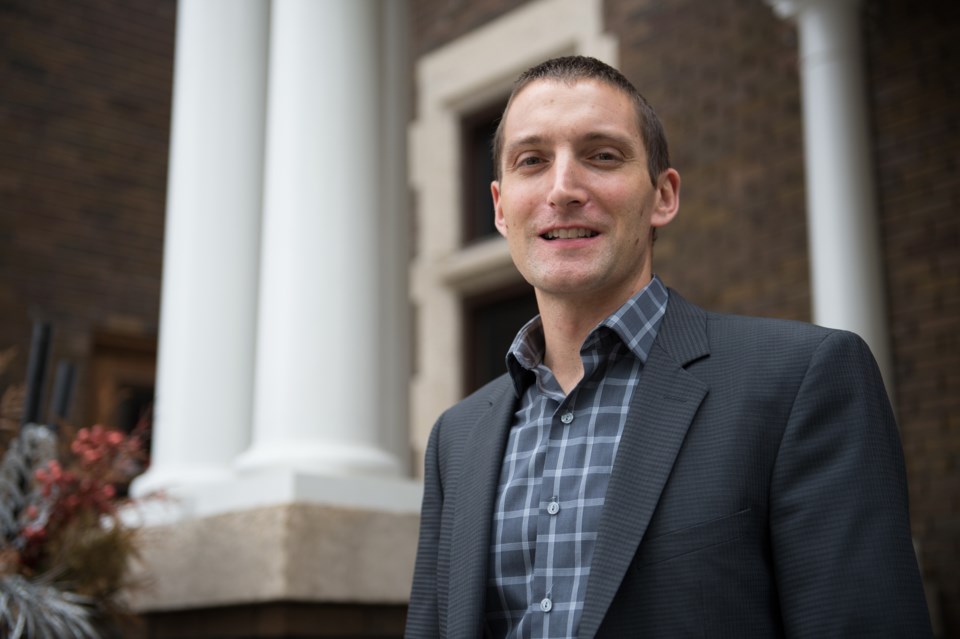Regina – When it comes to recapitalization in the oilpatch, it’s something Jason Moser, partner, investments with PFM Capital Inc. in Regina had been thinking about.
PFM’s portfolio includes investment in two drilling companies, several exploration and production companies, a midstream company and other oilfield services operations. Moser sits on several of the boards of these companies.
Asked about the need for recapitalization in the oilpatch, both in an equipment sense and financial, given it’s been three years since the downturn hit, and few companies have been replacing their iron, Moser replied, “No surprises, but there’s limited free cash flow, outside capital or senior debt available for most sub-sectors in energy services perhaps outside of a few isolated cases/management teams.
“When or if that money comes available, there still needs to be a suitable return on the assets to be generated in order to make those needed investments/replacements you talk about.”
He added that should be required anyways. “One good by-product to come out of the downturn is people actually look at a return on capital/equity and make investment decisions based on that versus just growth for the sake of growth.”
Moser went on, “In some cases perhaps, with whatever the base level of activity is – obviously a lot of the idle equipment may not be required (or required for oil and gas purposes) so therefore no maintenance or refurbishment needed if it’s obsolete or just redundant. The balance of equipment it will be a struggle, I imagine, to start doing that maintenance that was put off and finding the suitable shops/people to do it.”
Moser pointed out that the number of wells drilled in Saskatchewan now is not remotely close to what it had been a few years ago, but a lot of the infrastructure is built to handle those earlier numbers.
When it comes to capital for the oilpatch, he noted, “It’s tough. Not too many companies have zero bank debt or cash in the till. In an ideal world, if you had zero debt, you might not elect to work some particular equipment in some cases, right now, because you’re not getting sufficient return on capital for your equipment. But unfortunately, for many, that’s not an option. There’s other intangibles, like keeping your market share, keeping your presence and keeping your people.”
“In the real world, you may have to adapt to the reality you’re probably going to be working your equipment at economics that don’t support it for a period of time, to keep your people and keep your business viable. In the event that you do have a bit of surplus cashflow, you do have to earmark some of that for recertifications and maintenance capital. You have to put that away, just as you would pay your people, or pay your overhead, to the extent you can. Inevitably, it’s going to come up,” Moser said.
PFM has done some investments into the oilpatch over the past year, but Moser describes those investments as “pinpoint.”
“We’ve done a few isolated cases. A few producers, where we’ve seen they’re really good stewards of capital. Probably what’s required, in this cycle, we think is different than where it was previously growth at any cost. Now it’s a producer or service company getting a good return on capital and someone whose efficient at spending that capital.
He said one good thing is now people are applying the same standards to energy companies that they do to any other company. “Can you actually produce net income and sufficient margins?” he questioned.
He thinks there’s a correlation between net income, retained earnings, and value creation in this cycle. I think, if you look at it from the public side, it’s all relative, but those that do have net income, I think they’ve fared better. It is reflective that they’re actually creating value even after depreciating the assets or equipment. It’s also reflecting some underlying characteristics of the assets and management team.
“On the service side, again, it is difficult. We’re looking for someone who can differentiate themselves on something other than price, because that’s a race to the bottom,” Moser said. He added that if a company has a product or service that we see you can differentiate yourself, outside of price, and there’s a possibility you can maintain and grow market share, even in this flat commodity environment, that’s of interest. That may mean working in multiple geographies and/or adding complimentary business lines.
PFM’s investments are generally “patient capital,” with a usual investment horizon of five to seven years. Moser said, “People’s business plans have been interrupted by two to three years. That horizon has expanded and it’s a different world now. For producers, the critical mass, the size, has increased. You don’t see the same appetite to buy, finance or bank 500 - 1000 barrel a day producers, either. So if that threshold has increased, probably, by definition, your business plan has as well. It necessitates a longer business plan, the same on the service side as well and bigger service companies may be required to work for increasingly larger producers.”Â




